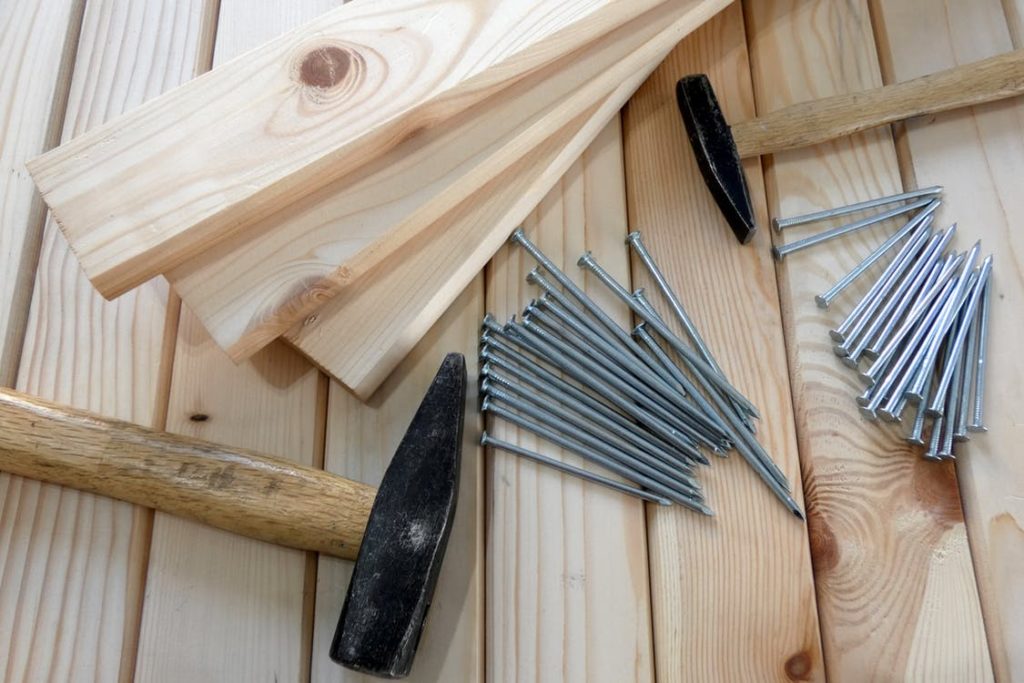Disclosure: This post may contain affiliate links, meaning we get a commission if you decide to make a purchase through our links, at no cost to you. Please read our disclosure for more info.
Are you thinking about building your home?
Building a home instead of buying one comes with many benefits. When you build your own home, you have complete control over the materials, layout, and design. Plus, building your own home can help you save money and create a space that’s more energy-efficient.
But, to build the home of your dreams, you need to choose the right home building material. Which materials should you be using, what is the strongest house material?
Check out this guide to learn about the strongest home building materials.
1. Metal
If you’re looking for a home building material that will stand the test of time, metal is the answer. Metal has been used for decades in the construction of skyscrapers and commercial buildings.
Recently, more and more homeowners have been using metal to construct their homes thanks to its long-lasting properties. When it comes to choosing a metal to construct your home from, iron and steel are the most popular choices. However, aluminum and copper are also becoming more popular.
The great thing about metal is that it can withstand any type of weather, and it’s virtually maintenance-free. Plus, metal buildings take less time to put together than other types of home building materials.
Another benefit of metal is that it allows for a very spacious interior. Because metal is so strong, you don’t need to add layer upon layer to your walls. This means you’ll have more space for relaxing and entertaining.
Another great thing about metal homes is that they’re eco-friendly, as a lot of metal parts are made from recycled materials.
However, it’s also important to keep in mind that iron and other metals do come with their downsides. Perhaps the biggest downside to metal is that it can corrode. If you live in a tropical climate, your metal home is particularly prone to corrosion.
Luckily, there are treatments you can apply to your home to protect it from corroding. Metal also isn’t the best material for multi-story homes, and you also typically can’t make a custom home from metal. Most frames come ready-made.
2. Concrete
Another excellent building material to consider for your home is concrete. Concrete is made from a mix of sand, stone, and other materials. These materials are then mixed with a binder such as water or cement and is one of the strongest building material for a house.
Once the materials have been mixed, the mixture is left to dry and harden. Even though concrete has been around for hundreds of years, it wasn’t until the last century that people started using it as a home building material.
When it comes to concrete, you have four main styles to choose from for your home. These include:
- Concrete Blocks: These can be manufactured quickly and are fairly inexpensive
- Precast Panels: These are typically built at a plant and then transferred to the construction site
- Insulating Concrete Forms: These are foam blocks that are hollowed out and filled with concrete
- Removable Forms: These are conventional concrete forms that are typically used to construct basement walls
One of the biggest benefits of building your home from reinforced concrete is that you can put your home together very quickly with this material. Concrete is also completely resistant to termites and extreme temperatures. It also goes a good job of isolating noise and can even provide isolation from the cold and heat.
The biggest downside to concrete structures is that patterns and styles can sometimes look a bit boring. It’s also an expensive material, but because of its longevity, it’s a worthy investment.
3. Stone
Stone is another home building material that’s known for being extremely durable. In addition to being durable, stone is also a natural and environmentally-friendly building material.
It’s also low-maintenance and requires minimal cleaning. When properly insulated, stone can also help regulate the temperature of your home, keeping you warm in the winters and cool in the summers. You can also find stone in many different designs, which can help you add some serious aesthetic appeal to your home.
One of the biggest downsides to stone is that it can be very expensive. It’s also difficult to quarry, heavy to move, and comes with stress and tension limitations.
Because of this, you’ll need to hire an expert general contractor to construct your stone home. Due to its heavy weight, it can also take longer than normal to construct a home made from stone, although it is a very durable building materials.
4. Brick
Another durable material worth considering for your home is brick. Brick is typically made from clay, and it has been used in building structures for centuries, dating all the way back to ancient Rome.
In addition to its durability, brick is also incredibly low maintenance. It’s not subject to rot or damage from hailstorms, and once it’s installed, you don’t need to do any painting.
Brick is also resistant to pest infestation and fires. If your home does catch fire, brick can help contain it and prevent it from spreading. Brick is also an eco-friendly material, and it provides better temperature control for your home.
The downside to brick is that it can be quite expensive, and there isn’t a wide range of colors available.
Are You Ready to Choose a Home Building Material?
Now that you’ve read this guide, it’s time for you to choose a home building material. Before you know it, your new home will be constructed and you’ll be ready to move in. And, if you choose one of these materials, you can look forward to a home that lasts for years and years.
For more home building tips and tricks, be sure to check back in with our blog.






